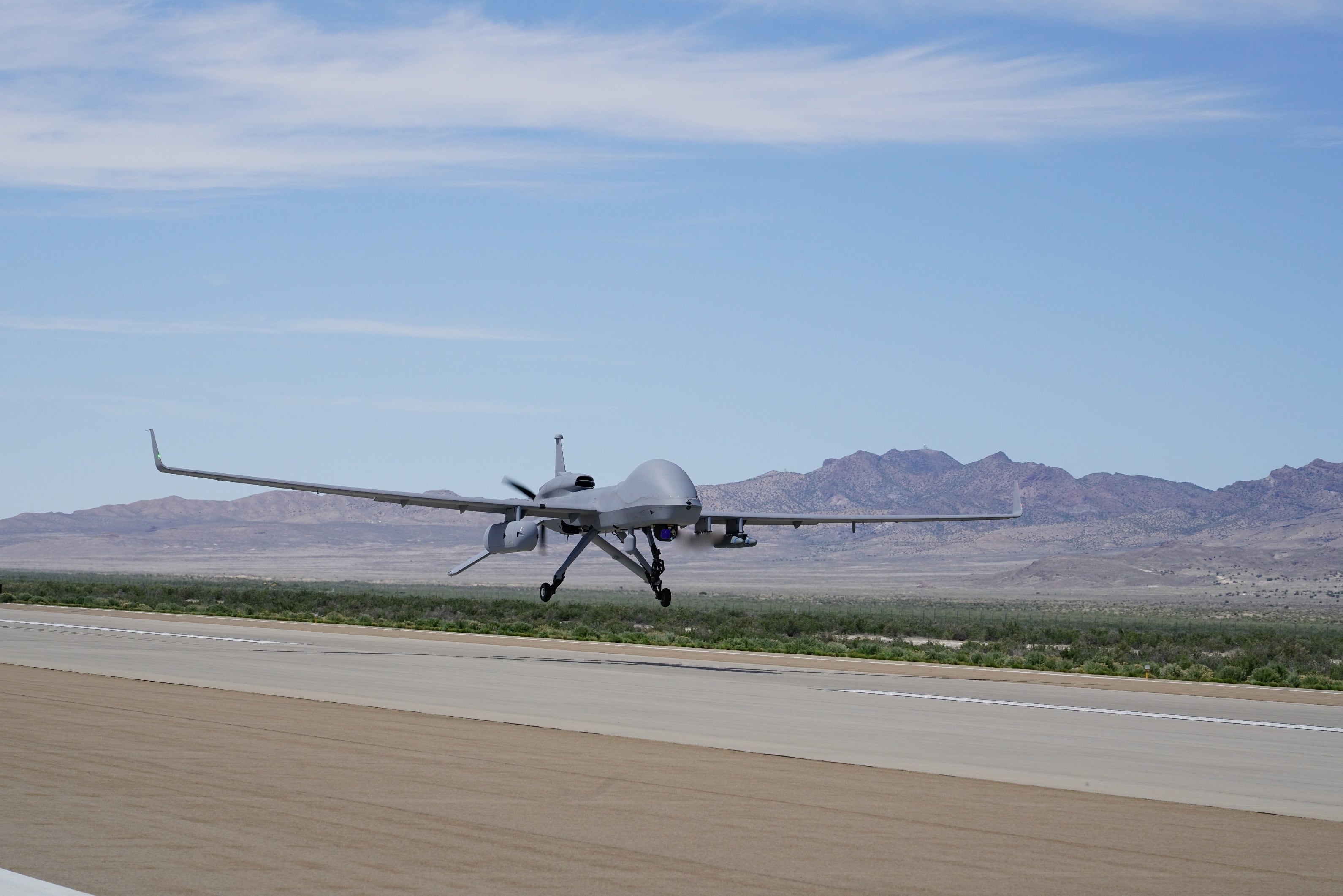NATIONAL HARBOR, Md. — In the time it takes to watch Christopher Nolan’s dawn-of-the-nuclear-age opus “Oppenheimer,” one U.S. Air Force official wants to be able to siphon threat information from the battlefield, retool electronic warfare systems with it and see the digital updates in action on the front lines.
While 180 minutes may seem like a long time to sit in a theater, processing huge amounts of data and updating fighting systems in so short a period is a challenging target for Col. Josh Koslov, the commander of the 350th Spectrum Warfare Wing.
“They have some wicked threats out there, and it takes us a little bit, working with our engineers, working with intel, to really crack the code,” Koslov said Sept. 13, speaking to reporters on the sidelines of the Air, Space and Cyber Conference at National Harbor in Maryland.
The 350th Spectrum Warfare Wing develops waveforms and updates jamming, spoofing and spying kits aboard aircraft such as the F-35. It’s an outgrowth of an electromagnetic spectrum superiority study conducted by the Department of Defense as it seeks to rejuvenate the military’s electronic warfare capabilities. At just 2 years old, the wing’s legacy thus far is short. But its potential reach is long.
“Our goal, our moonshot, is three hours,” Koslov said. “If you think about trying to get data to fighters, to bombers, to weapons, to countermeasures, to all the things that we do, that’s a good number.”
“The way we used to do it was, kind of, an industrial production-based model,” he said. “We updated B-52s and F-15s on this quarterly process, and that’s how it worked, until we went to a conflict. During the Cold War, there wasn’t a ton of conflicts where we were using those systems. So we got by with that.”
RELATED

Modern militaries rely on the spectrum to communicate, navigate and guide weapons to their targets; the fight over it — access, manipulation and more — can make or break success. The associated U.S. arsenal atrophied in the years following the Cold War, but officials are reprioritizing in preparation for a fight with Russia in Europe or China in the Indo-Pacific.
“We had such overmatch in the past, with the assets that we possessed, and our enemies possessed, that it wasn’t as emphasized. We no longer have conventional overmatch,” Koslov said. “The way we’re going to win is by dominating the spectrum.”
At its Eglin Air Force Base home in Florida, personnel with the 350th Spectrum Warfare Wing tinker with the latest software and code to counter what’s observed in the field. Crews have hands on more than 70 systems, by Koslov’s count, and each has a different timeline, making apples-to-apples comparisons difficult.
“For us, our key platforms are platforms like the F-35, the B-21, our modern platforms. We get that data transported back to Eglin, then allow our engineers to work on it, and then push it back out to the edge as quickly as possible,” he said. “Our older systems are a little bit clunkier than our modern systems.”
Updates in peaceful years past have rolled out on a regular basis or in chunks, ultimately lacking the nimbleness the 350th Spectrum Warfare Wing wants.
“That’s not good enough in a rapid-and-agile spectrum world that we do live in today,” Koslov said. “So we’re changing.”
Key to the commander’s desired three-hour window are crowdsourced data, plucked from the latest sorties, and ensuring the right info-shuttling networks are in place and insulated. Terabytes of data will be flowing, straining both pipes and parsers.
The Air Force is constructing what’s known as the Advanced Battle Management System, part of the Defense Department’s larger Combined Joint All-Domain Command and Control effort to connect forces across land, air, sea, space and cyber. By linking once-disparate troops and databases, the U.S. hopes to outwit and outshoot tech-savvy adversaries.

“We’re going to be in a contested spectrum environment. There’s no doubt about that,” said Koslov, who previously led the 609th Air Operations Center in Qatar. “It’s going to be critical that we have a PACE plan, a backup plan, in order to be able to push data and track who has data and who doesn’t, right?”
Koslov does not feel the need to scatter specialists across a theater of war to effectively execute the reprogramming mission. Instead, he said, there is value in concentrating operations, as is now the case on the Florida panhandle.
“I don’t foresee putting reprogrammers out on rocks in the Pacific,” he said. “I think that’s a bad idea.”
Air Force Chief of Staff Gen. CQ Brown this year warned Congress the Defense Department was losing its ability to fend off attacks on the electromagnetic spectrum, leaving troops susceptible on the high-tech battlefields of tomorrow.
Koslov in a separate interview last month agreed with Brown’s appraisal and said his wing takes seriously the charge of building back the necessary muscle memory.
“Everyone has recognized that the future of warfighting is about data, is about the spectrum. So we’re all rushing toward the same objective of being able to fight and win in the spectrum,” he said at the time. “Each of them, our adversaries, have approached the problem a little bit differently. But they’re definitely raising their game.”
Colin Demarest was a reporter at C4ISRNET, where he covered military networks, cyber and IT. Colin had previously covered the Department of Energy and its National Nuclear Security Administration — namely Cold War cleanup and nuclear weapons development — for a daily newspaper in South Carolina. Colin is also an award-winning photographer.








